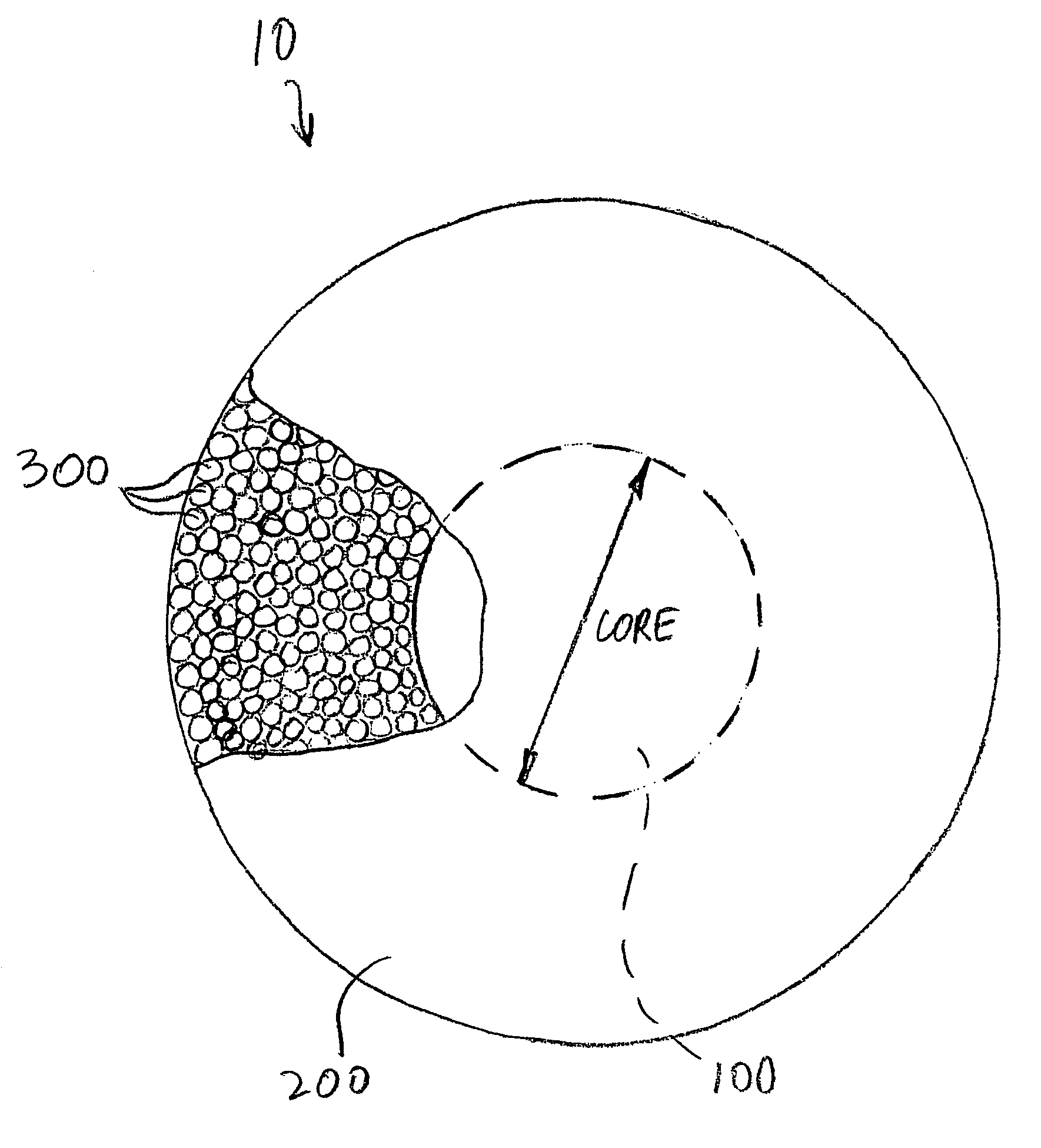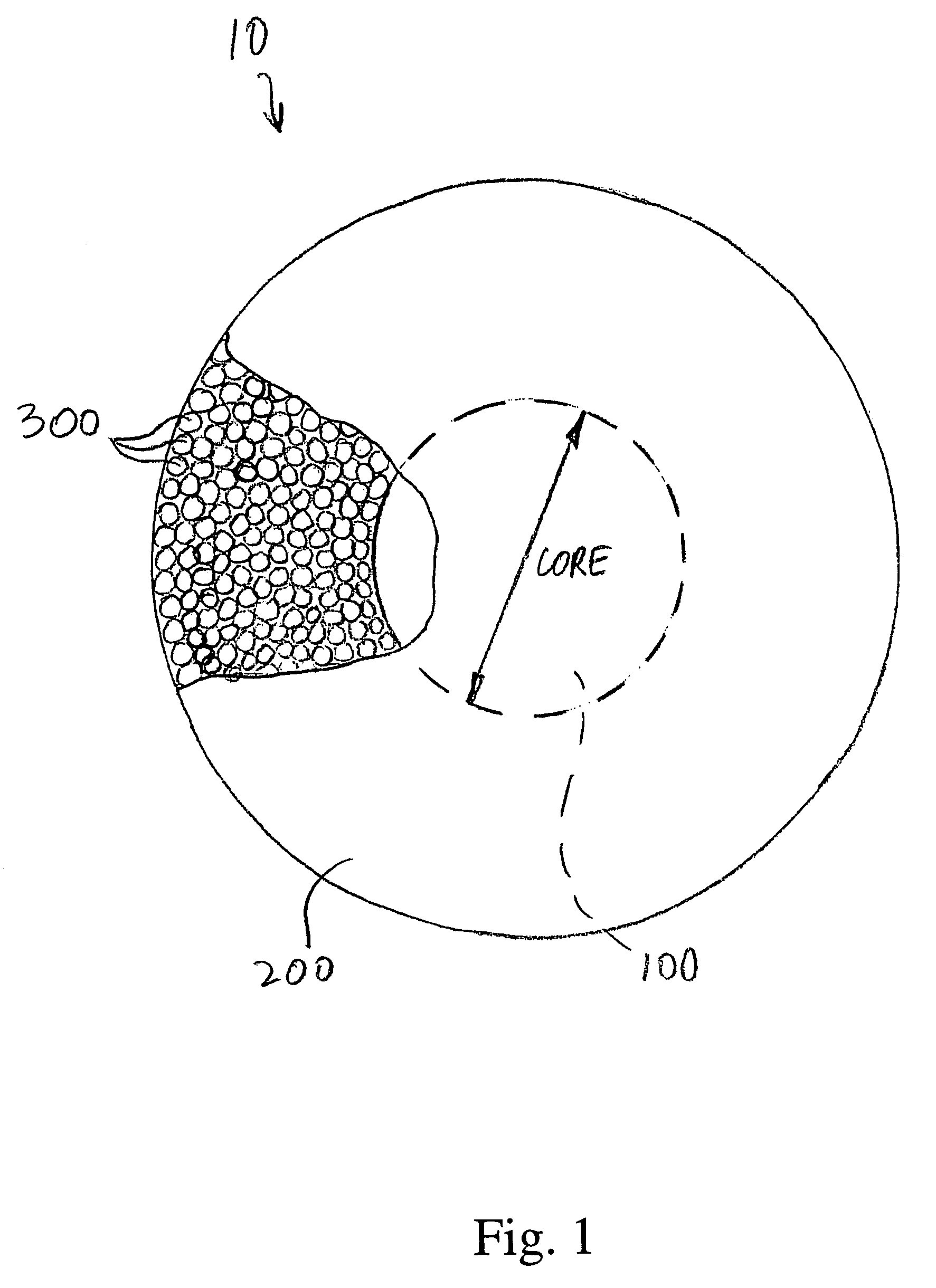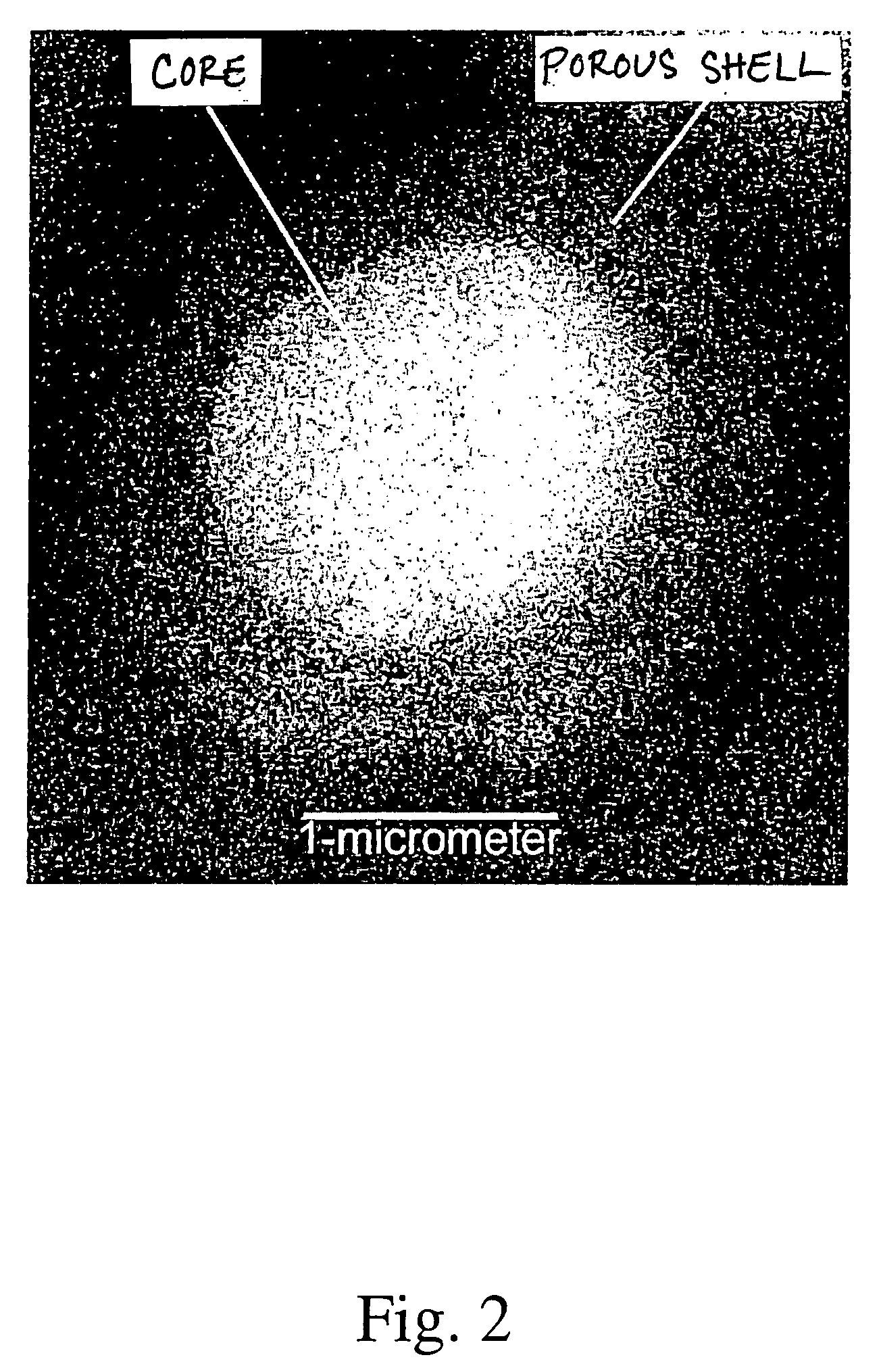Porous microparticles with solid cores
- Summary
- Abstract
- Description
- Claims
- Application Information
AI Technical Summary
Benefits of technology
Problems solved by technology
Method used
Image
Examples
example 1
[0081]In the following example, particle size was measured using a Beckman Coulter instrument (Beckman Coulter Instruments, Fullerton, Calif.) as follows. For measurement, particles were suspended homogeneously in Isoton II (Beckman Coulter 8546719). A greater than 30,000 particle count may be run using a 20 μm aperture in the volume mode for each sample. Using the Coulter principle, volumes of particles are converted to diameter, where a particle diameter is the equivalent spherical diameter, which is the diameter of a sphere whose volume is equivalent to that of the particle.
[0082]Core particles of 2.06-μm diameter were prepared by the process of U.S. Pat. No. 4,775,520 to Unger et al. using 500 nm silica sol “seed” particles synthesized according to Stober et al., J. Colloid and Interface Sci. 26, 62-69 (1968). These particles were isolated by filtration, dried and heated to 1090° C. in a furnace for 24.5 hours to densify the particles. The densified particles then were boiled in...
example 2
[0087]A 10% by weight aqueous suspension of silica core particles including 5 g of SiO2 particles of diameter 2.0 μm was brought to a pH of 2.3 with nitric acid. To these cores was added 200 grams of 0.5% by weight of aqueous solution of poly(diallyldimethylammonium) chloride (PDADMA). This solution was made by diluting 20% by weight aqueous solutions of polyelectrolyte (Sigma-Aldrich, 409014, 409022, and 409030—“Low”, “Medium”, and “High” weight average molecular weights of PDADMA were used, corresponding to Mw values of 100-200 kD, 200-350 kD, and 400-500 kD according to the manufacturer). The polyelectrolyte and silica core suspension was centrifuged at 2,000 rpms for 10 minutes (using a Sorvall T6000 model centrifuge) and the supernatant was decanted. The cores were resuspended in deionized water, centrifuged (about 2,000 rpms for 10 minutes) and the supernatant was decanted. This wash with deionized water was repeated one additional time. 50 grams of an aqueous suspension of si...
example 3
[0089]The procedure of Example 1 was followed to prepare microparticles having a particle diameter of 2.7 μm. A sample of the microparticles was loaded into a 50×4.6 mm liquid chromatographic column to form a packed column using the procedure described in Example 1. Packed liquid chromatographic columns of 50×4.6 mm of each of the following comparative particles were obtained: totally porous particles having a diameter of 5 μm (commercially available as “Ace” C18); totally porous particles having a diameter of 3.5 μm (commercially available as “Zorbax” XDB-C18); and totally porous particles having a diameter of 1.8 μm (commercially available as “Zorbax” XDB-C18). The final columns were tested in a model 1100 liquid chromatograph (Agilent Technologies, Palo Alto, Calif.) using naphthalene as the solute and 60% acetonitrile / 40% water as the mobile phase at 24° C.
[0090]FIG. 6 demonstrates the performance of a packed column of the inventive microparticles in comparison to the packed col...
PUM
| Property | Measurement | Unit |
|---|---|---|
| Length | aaaaa | aaaaa |
| Length | aaaaa | aaaaa |
| Fraction | aaaaa | aaaaa |
Abstract
Description
Claims
Application Information
 Login to View More
Login to View More - R&D
- Intellectual Property
- Life Sciences
- Materials
- Tech Scout
- Unparalleled Data Quality
- Higher Quality Content
- 60% Fewer Hallucinations
Browse by: Latest US Patents, China's latest patents, Technical Efficacy Thesaurus, Application Domain, Technology Topic, Popular Technical Reports.
© 2025 PatSnap. All rights reserved.Legal|Privacy policy|Modern Slavery Act Transparency Statement|Sitemap|About US| Contact US: help@patsnap.com



